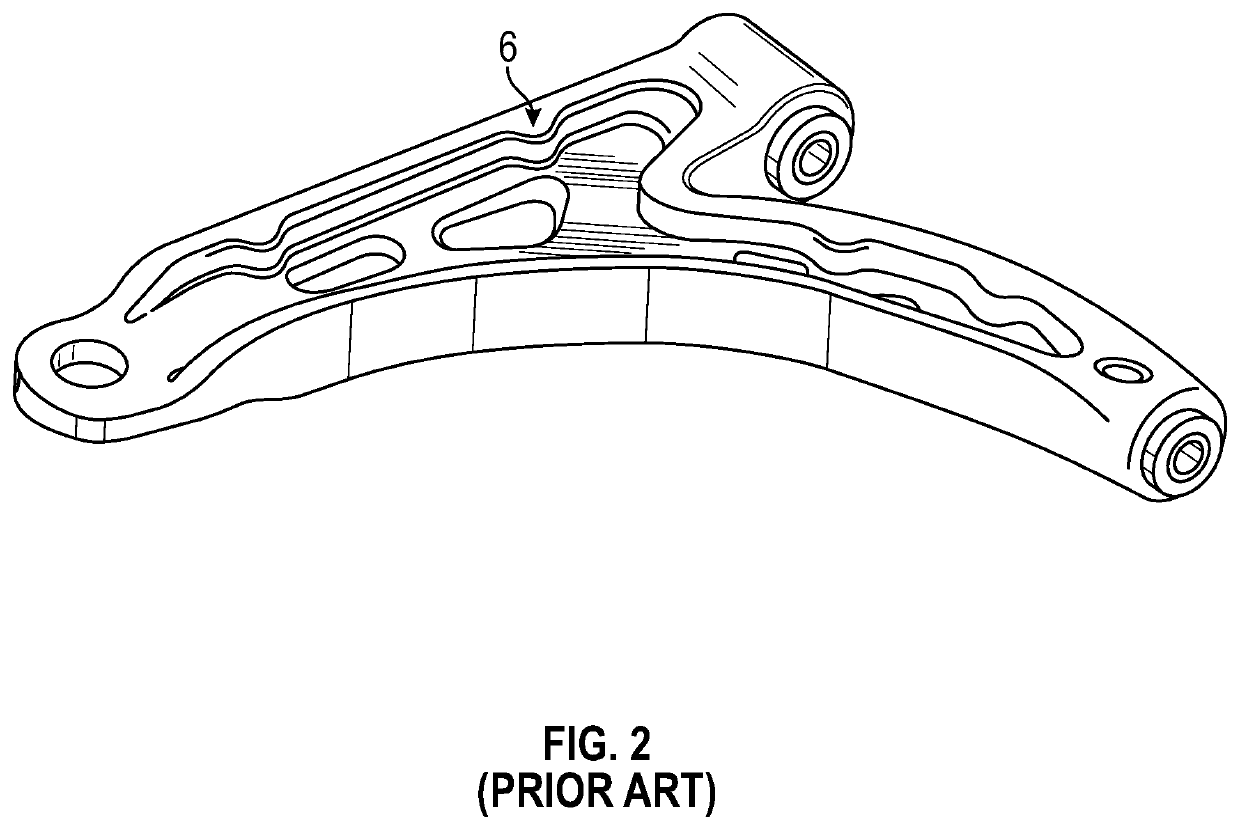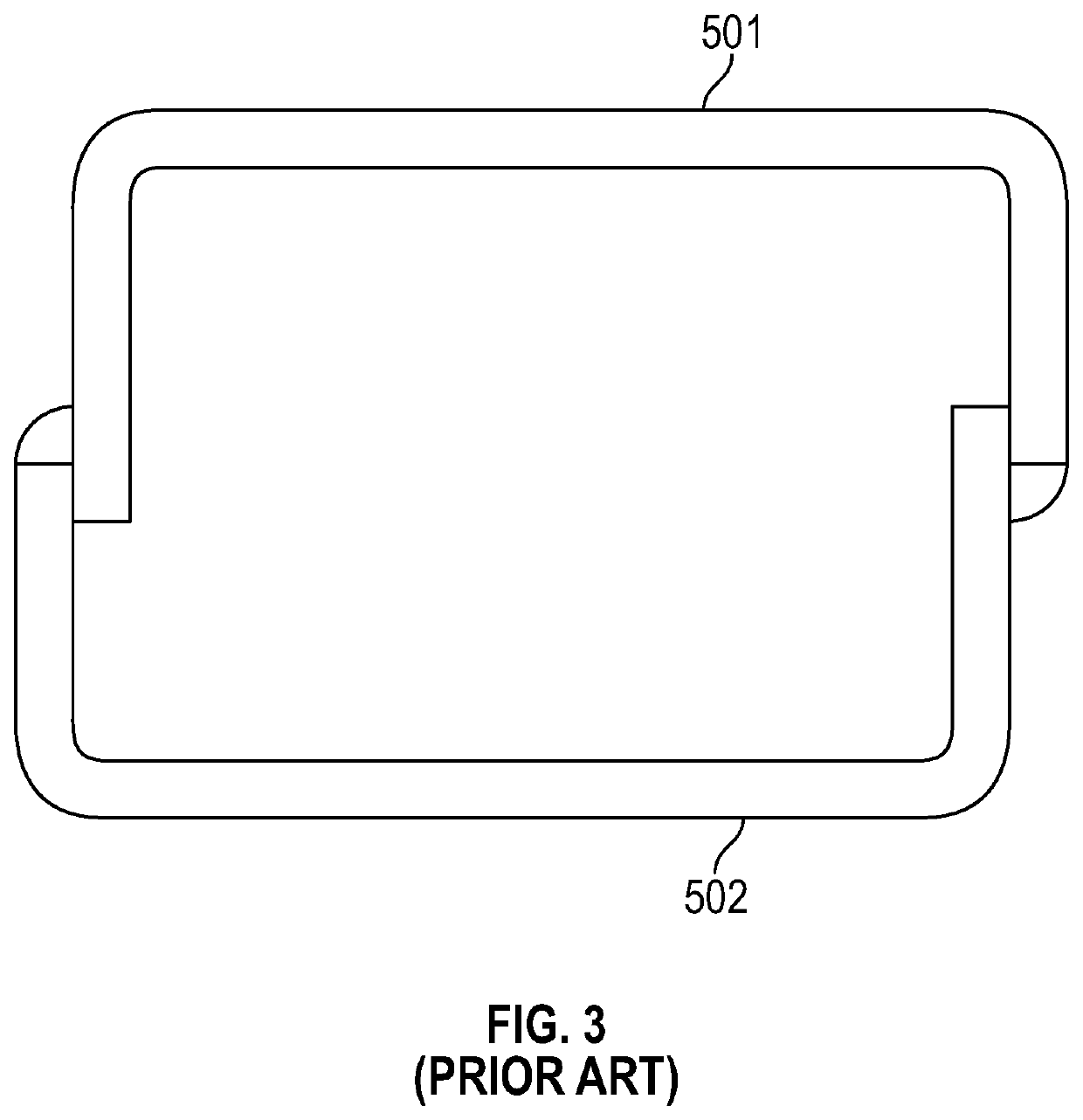Weldless vehicular suspension control arm
a control arm and vehicle technology, applied in the field of automotive components, can solve the problems of reduced strength and stiffness, use of a number of complex manufacturing processes, and non-uniform shape, and achieve the effects of low mass, high inherent stiffness and strength, and low cos
- Summary
- Abstract
- Description
- Claims
- Application Information
AI Technical Summary
Benefits of technology
Problems solved by technology
Method used
Image
Examples
Embodiment Construction
[0053]FIGS. 5 to 9 illustrate a preferred embodiment of the weldless vehicle suspension control arm 15 of the invention. A first arm component 12 and a second arm component 14 are stamped from sheet metal. The preferred material is a steel sheet pre-coated for corrosion protection. Given the nature of this construction, a lighter gage sheet metal may generally be used than with a corresponding prior art welded construction, such as illustrated in FIG. 3 and FIG. 4.
[0054]First arm component 12 and second arm component 14 have certain common features. Each comprises an outer wall 16 and two side walls 18. Each arm component has an integral bushing seat receiving aperture 20 adjacent a first end 22 of the arm component. With appropriate stamping, the apertures 20 are formed from the same material comprising the rest of the arm component without the need to weld or otherwise attach a separate component with a bushing seat to the control arm, as typical in prior art manufacture. In addit...
PUM
 Login to View More
Login to View More Abstract
Description
Claims
Application Information
 Login to View More
Login to View More - R&D
- Intellectual Property
- Life Sciences
- Materials
- Tech Scout
- Unparalleled Data Quality
- Higher Quality Content
- 60% Fewer Hallucinations
Browse by: Latest US Patents, China's latest patents, Technical Efficacy Thesaurus, Application Domain, Technology Topic, Popular Technical Reports.
© 2025 PatSnap. All rights reserved.Legal|Privacy policy|Modern Slavery Act Transparency Statement|Sitemap|About US| Contact US: help@patsnap.com



